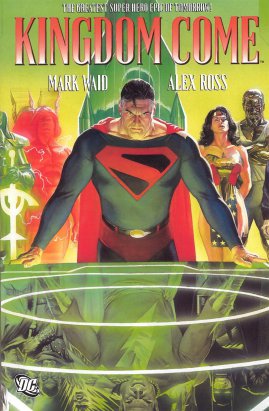
Content warning: This book contains sexual content, swearing, depictions of abuse, and other potentially disturbing adult content. Please be aware of this before you or any young children read.
Late last year, I came into contact with a new TV series on Amazon Prime. When my sister and I came home for Christmas, our dad mentioned that this series, ‘The Man in the High Castle’, seemed interesting and explained the concept to us. I had never heard of the idea of alternate history outside of the fanfiction I read on the Internet, so the concept of a critically-acclaimed TV series about what life could be like if the Japanese Empire and Nazi Germany had won WWII seemed amazing. My sister is a huge history buff, so between the two of us, we decided to get an Amazon Prime account to watch it. (We loved it.)
Since then, I’ve learned that there’s an entire genre of alternate history, composed of many books and TV series. Blonde Roots is one of them, and I was immediately intrigued by the idea of Europeans being taken as slaves by African slavers and plantation settlers. And I have to say that this book cemented my newfound love of the alternate history genre.
Where do I start with this book? Bernardine Evaristo did an amazing job of flipping the idea of African slave trade on its head; it didn’t feel like a bad imitation or translation of what really happened in our history. It feels like something that could’ve really happened if things in history had gone differently. And when the main character, Doris Scragglethorpe (or known as Omorenomwara, her slave name), is kidnapped as a child from her English home and taken to the African-controlled continent of Amarika, I felt like I was right there with her. I was frightened of the strange men who talked and dressed differently, and who kidnapped her from her home and shoved her and hundreds of others (some of them were even royalty) into a slave boat. I felt her fear and confusion about what an 11-year old was supposed to do: fight for freedom, or submit and try and survive? And I could understand her frustration and pain that only grew as she spent more years in slavery. Evaristo used just the right amount of description to pull you into the story and setting without being overwhelming or bogging you down with too much. That’s a hard balance to maintain for an author, but she did it stunningly.
And the more I read this book, the more I realized what it meant to be a slave in our real world. Thousands of men, women, and children were kidnapped by strange white men from another land and shoved into a ship where the mortality rates were ridiculously high. And if you were a woman, you ran the risk of being used to relieve stress and frustration by the men on the ship. And if you miraculously survived the trip across the Atlantic (which was often plagued with sickness, death, suffering, and starvation), you were sold off like animals to people who didn’t view you as human. In Blonde Roots, Evaristo uses the real-life age-old arguments of which race, African or Caucasian, is smarter and which one is sub-human. Our real-world argued that the “Negroid” race was underdeveloped and they could do only the most menial tasks (this excuse was still used up to WWII as a reason for black soldiers not to fight with white soldiers), but Doris’ masters believe that Caucasians are subpar to them because of their skull structure and fair complexion.
Through Doris, Evaristo gives voice to the millions of slaves in our real history who suffered horrific abuse. She gave voice to those real slaves who were ripped away from loved ones and their home, and use Doris’ homesickness and hate of her new culture to remind us that people lost so much in the slave trade. She describes the daring risks those who wanted to be free made, just like Doris did, and the fate of those who aren’t fortunate enough to escape. And through Doris, Evaristo portrays the utter frustration someone feels when they’re treated as less than human when their masters talk about them like they’re not there and belittle their intelligence and emotions.
Interestingly enough, Evaristo also portrays the other side in Blonde Roots: the masters. She switches the narrator to Doris’ master, Bwana, halfway through the book and describes his rise as a plantation master and acquiring Doris. The voices are incredibly different and sound nothing alike, but still come across as genuine. Through Bwana, we see the almost naivete that slave masters and owners have. They genuinely believe that Caucasians are sub-human, and they are doing the Europeans a great service by culturing them and teaching them how to “truly be human”. It’s a very powerful reflection of the mindset of white slave owners in our history and gives us a glimpse of how someone lives like this.
There’s so much to talk about with this book: I haven’t even touched on the vivid descriptions of Amarika or the African culture that permeates Doris’ life, or the relationships she builds while trying to escape Amarika back to Europe. There’s the story of her family and what happened to them after she was kidnapped, and there’s Doris’ backstory of different masters she went through. I will touch briefly on the ending, which was a rollercoaster of events to get to. It’s a bittersweet ending, full of sacrifices for those you love, which could mean death as a slave. But it ends on a high note, a note of hope for the future and for Doris looking forward to emancipation or freedom someday. And it gives closure to the stories of all you come across, although the closure may not be very nice for some who helped Doris along her way.
Overall ConclusionThis story has only increased my desire to read more alternate history stories like The Man in the High Castle or Blonde Roots. Evaristo used her story to give a powerful and satirical description of the African slave trade, to help you see what it was like to be a slave in a strange land with strange people. It was an intense read, and every time I opened the book, I found myself immersed in a strange world of strange animals, foods, smells, dress styles, and culture. I stayed up late many nights to see how the story ended, and what would eventually become of Doris Scragglethorpe. While there is some content that can be disturbing or overwhelming for some readers, I highly recommend it to anyone who enjoys a good read and seeing how history could have been different.
Interested? Purchase Blonde Roots on Amazon!
Advertisements Share this:




